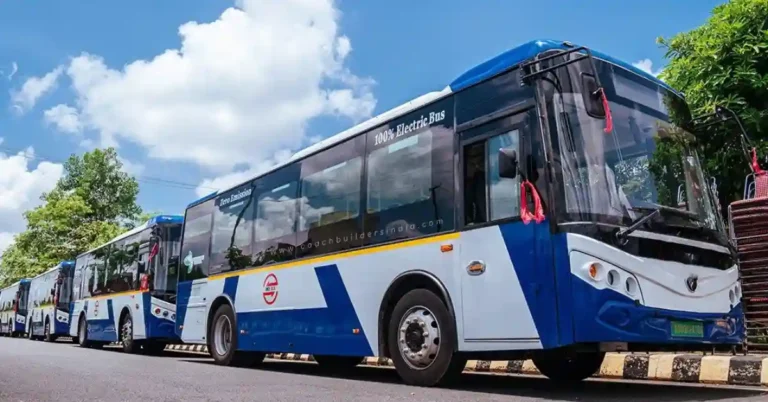Difference Between Volvo B9R and Volvo B11R specs | Price
Short Answer: The difference between Volvo B9R and Volvo B11R primarily lies in engine size, with the B11R featuring a more powerful 11-liter engine compared to the B9R’s 9-liter engine. Additionally, the Volvo B11R is longer at 15 meters, while the B9R measures 13.7 meters. A key difference between Volvo B9R and Volvo B11R is the axle configuration – the B9R is equipped with a pusher axle positioned before the main drive axle, whereas the B11R features a steerable tag axle located behind the drive axle.

Volvo has established a strong reputation in the bus industry globally for producing high-quality, reliable, and comfortable buses.
Among its popular models are the Volvo B9R and Volvo B11R, both of which have been widely used in various markets.
While Volvo has recently launched the Volvo 9600 in the Indian market, both the Volvo B9R and B11 continue to be popular among bus operators in India.
However, many of us are still unaware of the difference between Volvo B9R and Volvo B11R models.
Understanding the differences between these two models is crucial for operators to make informed decisions based on their specific needs.
This article aims to provide a detailed comparison of the Volvo B9R and Volvo B11R, covering various aspects such as performance, fuel efficiency, aesthetic difference, and operating costs.
Understanding the Volvo Bus Nomenclature
Before we dive into the difference Between Volvo B9R and Volvo B11R, let’s take a moment to understand the naming convention used by Volvo for its bus models.
The letter “B” stands for Bus, indicating that the vehicle is a bus. The number that follows (7, 9, 11) represents the engine displacement in liters. The letter “R” signifies that the engine is mounted at the rear of the bus. Simply put,
- B9R: Equipped with a 9-liter engine mounted at the rear.
- B7R: Equipped with a 7-liter engine mounted at the rear.
- B11R: Equipped with an 11-liter engine mounted at the rear.
Now that we have a clear understanding of the naming convention, let’s delve into the specifics of the Volvo B9R and Volvo B11R.
Overview of the Volvo B9R

In comparison to the Volvo B11R, the Volvo 9400 B9R is a mid-range coach that has been a popular choice for long-distance travel and tour operations. It features a 9-liter engine that delivers adequate power for most travel needs, including intercity travel.
Volvo B9R Specifications
| Specification | Details |
|---|---|
| Engine Type and Power | 9-liter diesel engine |
| Bus Length | 13.7-meters |
| Displacement (cc) | 9.3 ltr |
| Maximum Power | 380 bhp |
| Max Torque | 1740 Nm |
| Seating Capacity | Upto 49+D |
Overview of the Volvo B11R

The Volvo 9400 B11R is a high-performance coach designed for premium travel experiences. It comes with an 11-liter engine that provides more power and efficiency, making it suitable for more demanding routes like hilly terrain.
Volvo B11R Specifications
| Specification | Details |
|---|---|
| Engine Type and Power | 11-liter diesel engine |
| Bus Length | 14.5-meter / 15-meter |
| Displacement (cc) | 10.8 ltr |
| Max Power | 430 hp |
| Max Torque | 2091 Nm |
| Seating Capacity | Upto 55 + D |
Difference Between Volvo B9R and Volvo B11R
Here are the key differences between Volvo B9R and Volvo B11R buses:
- Performance Comparison: The Volvo B11R, with its more powerful 11-liter engine, offers better performance compared to the B9R. It provides higher torque and power, resulting in better acceleration and the ability to handle challenging terrains more effectively.
- Seating Capacity: The B9R can accommodate up to 49 passengers, while the B11R can seat up to 55 passengers. The B11R’s higher seating capacity makes it ideal for routes with higher passenger demand.
- Safety Features: Both models are equipped with essential safety features such as ABS and ESP. However, the B11R includes more advanced braking systems and safety enhancements, making it more suitable for challenging routes and high-speed travel.
- Environmental Impact: The B11R complies with stricter emissions Euro 6 standards, making it a more environmentally friendly option. Both models aim to minimize their carbon footprint, but the B11R has a slight edge in terms of overall environmental impact.
- Maintenance and Operating Costs: The B9R is generally cheaper to maintain due to its simpler engine and fewer advanced systems. However, the B11R, despite its higher initial cost, offers better long-term reliability and lower per-mile operating costs.
Difference Between Volvo B9R and Volvo B11R Specifications
| Specification | Volvo B9R | Volvo B11R |
|---|---|---|
| Engine Type | 9-liter diesel engine | 11-liter diesel engine |
| Length | 13.7-m (3-axle) | 14.5-m/15-m (3-axle) |
| Displacement (cc) | 9.3 ltr | 10.8 ltr |
| Max Power | 380 bhp | 430 hp |
| Max Torque | 1740 Nm | 2091 Nm |
| Engine Cylinders | 6 | 6 |
Pusher Vs Tag Axle: One of the Main Differences Between Volvo B9R and Volvo B11R
One of the most visually distinctive differences between the Volvo B9R and the Volvo B11R is the position and functionality of their third axles.
The Volvo B9R features a pusher axle, positioned in front of the main drive axle, similar to the design seen in the Ashok Leyland 15-meter multi-axle bus chassis. These pusher axles, located in front of the drive axles, enhance stability during turns and can increase the load-carrying capacity. Additionally, they contribute to improved efficiency, performance, and stopping distances.
In contrast, the Volvo B11R is equipped with a tag axle situated behind the main drive axle, which is steerable. This tag axle turns in the opposite direction of the front axle, aiding in maneuverability and offering a different dynamic to the vehicle’s handling.
Wrapping it Up
The main difference between Volvo B9R and B11R lies in the length of the bus, engine capacity, and the position of the third axle.
The B9R is an excellent choice for operators seeking a reliable and cost-effective coach for long-distance travel.
In contrast, the B11R is ideal for those looking for a high-performance, luxurious bus with advanced safety and comfort features. Potential buyers should consider their specific requirements and budget when choosing between these two models.
Catch the latest Bus Industry updates, Exclusive Interviews, Bus News, and International Bus News on Coach Builders India. Download the latest issue of the The Bus Insider magazine for more insights.







